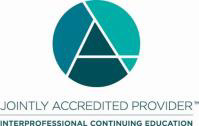WMJ Vol 121 Issue 1: Idiopathic Congenital Talipes Equinovarus in Wisconsin Newborns: Incidence and Associated Risk Factors
ABSTRACT
Introduction: Clubfoot, also known as idiopathic congenital talipes equinovarus, is one of the most common pediatric deformities affecting 1 to 2 in every 1,000 live births. We sought to provide the first known analysis of incidence of clubfoot diagnoses in the most populous region of Wisconsin as well as risk factors associated with the deformity.
Methods: We conducted a retrospective study on children treated for clubfoot at Children’s Wisconsin from January 1, 2004, through December 31, 2018. To examine trends, we performed a linear trend of annual clubfoot births for each county covered as well as the southeastern region of Wisconsin. We also analyzed common risk factors associated with clubfoot.
Results: The study population included 760 clubfoot patients: 497 males and 263 females. Most patients were non-Hispanic/Latino (76.8%) and White (72.2%). A total of 414 patients (54.4%) had no family history of clubfoot, 130 patients (17.1%) had a positive family history of clubfoot, and family history was unknown for 216 patient (28.4%). The southeastern region of Wisconsin contained the largest patient population (n = 523) and, among counties studied, Milwaukee County had the largest patient population (n = 269). Linear trends for Milwaukee County and the southeastern region of Wisconsin showed a statistically significant increase in clubfoot births from 2004 through 2017 (P < 0.001).
Conclusions: In this study of children diagnosed with clubfoot, high population areas showed a statistically significant increase in the number of children affected over time, with a low evidence of family history. This study provides further insight into the possible etiology of clubfoot being influenced by an exogenous, environmental factor.
Intended Audience
The target audience for this journal-based activity is healthcare providers caring for the people and communities of Wisconsin and beyond.
Learning Objectives
As a result of this journal-based activity, learners will be able to:
- Explain evolving understanding of idiopathic congenital talipes equinovarus (ie, clubfoot) as a common pediatric deformity that has multifactorial etiology.
- Summarize the results of a retrospective study of children treated for clubfoot in Wisconsin documenting incidence of clubfoot diagnoses and analyzing risk factors associated with this deformity.
- Discuss implications of this study for future research.
FACULTY DISCLOSURE
It is the policy of the University of Wisconsin–Madison Interprofessional Continuing Education Partnership (ICEP) to identify, mitigate and disclose all relevant financial relationships with ineligible companies* held by the speakers/presenters, authors, planners, and other persons who may influence content of this accredited continuing education (CE). In addition, speakers, presenters and authors must disclose any planned discussion of unlabeled/unapproved uses of drugs or devices during their presentation.
For this accredited continuing education activity all relevant financial relationships have been mitigated and detailed disclosures are listed below.
| Name of Individual | Individual's Role in Activity | Financial Relationship Disclosure | Discussion of |
| Marianna Shershneva, MD, PhD | Accreditation Specialist | No relevant relationships with ineligible companies to disclose | No |
| Brooke J. Olson, BS | Author | No relevant relationships with ineligible companies to disclose | No |
| Scott Van Valin, MD | Author | No relevant relationships with ineligible companies to disclose | No |
| Xue-Cheng Liu, MD, PhD | Author | No relevant relationships with ineligible companies to disclose | No |
| Puneet Arora, MD | Reviewer | No relevant relationships with ineligible companies to disclose | No |
| Matthew Dellinger, PhD | Reviewer | No relevant relationships with ineligible companies to disclose | No |
| Sarina Schrager, MD | Editor | No relevant relationships with ineligible companies to disclose | No |
*Ineligible companies are those whose primary business is producing, marketing, selling, re-selling, or distributing healthcare products used by or on, patients.
The ACCME does not consider providers of clinical services directly to patients to be ineligible companies.
Accreditation
Accreditation Statement
 | In support of improving patient care, this activity has been planned and implemented by the University of Wisconsin–Madison ICEP and the Wisconsin Medical Journal. The University of Wisconsin–Madison ICEP is jointly accredited by the Accreditation Council for Continuing Medical Education (ACCME), the Accreditation Council for Pharmacy Education (ACPE), and the American Nurses Credentialing Center (ANCC), to provide continuing education for the healthcare team. |
Credit Designation Statements
American Medical Association (AMA)
The University of Wisconsin–Madison ICEP designates this journal-based CE activity for a maximum of 1.0 AMA PRA Category 1 Credit™. Physicians should claim only the credit commensurate with the extent of their participation in the activity.
Continuing Education Units
The University of Wisconsin–Madison ICEP, as a member of the University Professional & Continuing Education Association (UPCEA), authorizes this program for 0.1 continuing education units (CEUs) or 1 hour.
Available Credit
- 1.00 AMA PRA Category 1 Credit™
- 1.00 University of Wisconsin–Madison Continuing Education Hours
- 1.00 Approved for AMA PRA Category 1 Credit™
Required Hardware/software
Free, current version of Chrome, Firefox, Safari, or Edge. Some older browsers and Microsoft Internet Explorer could produce error messages or not display the content correctly.
Free, current version of Adobe Acrobat Reader or other .pdf reader.

 Facebook
Facebook X
X LinkedIn
LinkedIn Forward
Forward